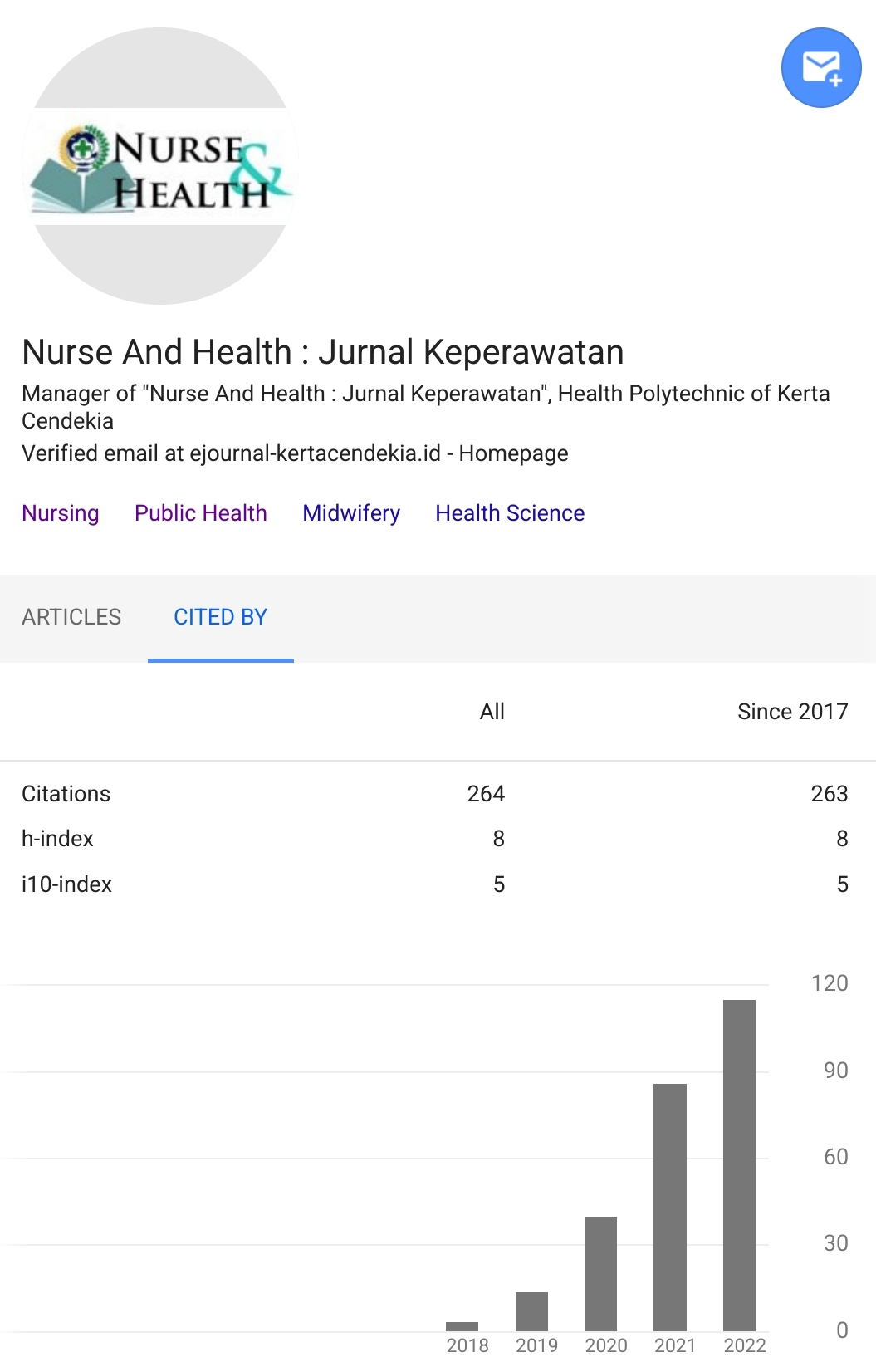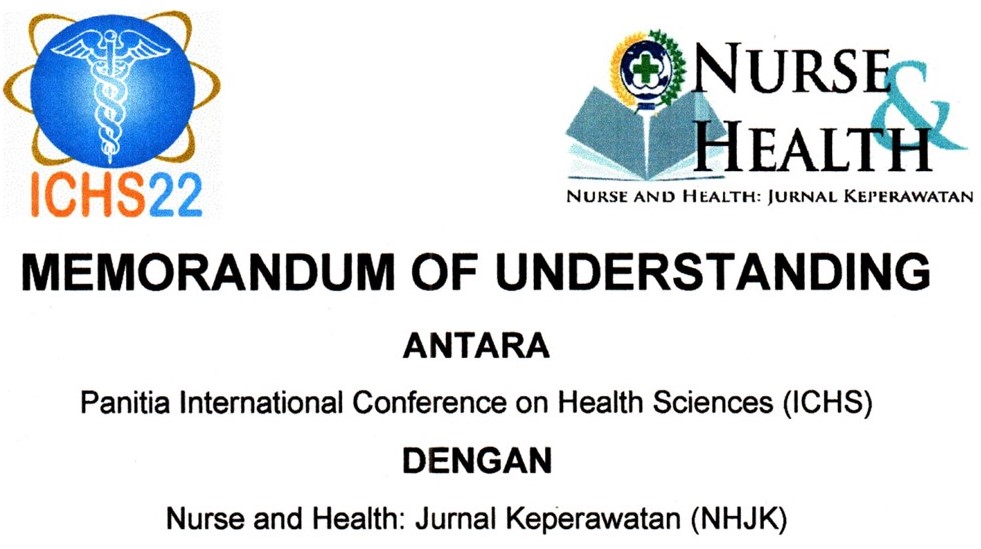TOTAL OF LACTOBACILLUS BIFIDUS IN BREASTFED INFANTS FROM NURSING MOTHERS INTERVENED WITH ZINC
Abstract
Background: In pregnancy and nursing, zinc plays an important role, including fetal development and milk secretion. Zinc in the lactation process is a crucial modulator of the mammary gland, which is very important for successful lactation. Objectives: The purpose of this study was to analyze the total of Lactobacillus Bifidus using Quantitative RT-PCR in the feces of breastfed infants from mothers who were given zinc tablets. Methods: This type of research was experimental using a quasi-experimental post-test only with a control design and a quantitative approach. This research was carried out at Antang Perumnas Public Health Center, Kassi-Kassi Health Center, Jumpanang Baru Health Center and Bara-Barayya Health center from March 22 to June 22, 2021. The Population in this study were all newborns from mother with normal zinc levels in 2021 in the Makassar City Health Center area as many as 62 people. The sampling technique used purposive sampling, about 12 samples per group. To avoid dropout and increase power, the sample was then added with an estimated drop out of about 30%, 12 + (30% x 12) = 15.6, rounded up to 16. Each group consisted of 16 samples for breastfed infants from mothers who obtained zinc tablets (intervention) and 16 samples for breastfed infants from mothers who did not obtain zinc tablets (control). This study uses an Independent Sample Test. Results: This study showed that the group of breastfed infants from mothers obtaining zinc tablets had a higher mean value of 2947625215.62 compared to the control group of 162374516.97. There was a difference in the number of Lactobacillus in the intervention group after being treated with a statistically significant difference in the mean of –2785250698.65 by the Independent sample test analysis, the value of p = 0.009 (α < 0.05), which means there was a significant difference between the intervention groups and control group. Conclusion: The highest number of Lactobacillus was the intervention group which indicated a difference of Lactobacillus in the feces of breastfed infants from mothers who obtained zinc tablets.Downloads
References
Ahnfeldt, A. M., Hyldig, N., Li, Y., Kappel, S. S., Aunsholdt, L., Sangild, P. T., & Zachariassen, G. (2019). FortiColos - A multicentre study using bovine colostrum as a fortifier to human milk in very preterm infants: Study protocol for a randomised controlled pilot trial. Trials, 20(1). https://doi.org/10.1186/s13063-019-3367-7 DOI: https://doi.org/10.1186/s13063-019-3367-7
Arsyad, N. A. (2019). Breast Milk Volume Using Portable Double Pump Mikrokontroller Arduino Nano. Hasanuddin University. DOI: https://doi.org/10.1016/j.enfcli.2019.07.159
Calero, C. D. Q., Rincón, E. O., & Marqueta, P. M. (2020). Probiotics, prebiotics and synbiotics: useful for athletes and active individuals? A systematic review. Beneficial Microbes, 11(2). https://doi.org/10.3920/BM2019.0076 DOI: https://doi.org/10.3920/BM2019.0076
Du, X., Xie, C., Shi, L., Gao, H., Yang, C., & Liu, Q. (2020). Probiotics, prebiotics, and synbiotics supplementation in prediabetes: Protocol for a systematic review and meta-analysis. In Medicine (United States) (Vol. 99, Issue 13). https://doi.org/10.1097/MD.0000000000019708 DOI: https://doi.org/10.1097/MD.0000000000019708
E., O. (2018). Human milk oligosaccharide isomers differentially influence bifidobacterial physiology within a modeled infant gut microbiome. Breastfeeding Medicine, 13(7).
Ernita, L., Nasrul, E., & Friadi, A. (2019). The Difference of Zinc And Matrix Levels of Metalloproteinase-9 Serum Between Premature Rupture Of Membrane Aterm And Normal Pregnancy. Journal of Midwifery, 4(1). https://doi.org/10.25077/jom.4.1.40-50.2019 DOI: https://doi.org/10.25077/jom.4.1.40-50.2019
Gomez-Gallego, C., Garcia-Mantrana, I., Salminen, S., & Collado, M. C. (2016). The human milk microbiome and factors influencing its composition and activity. In Seminars in Fetal and Neonatal Medicine (Vol. 21, Issue 6). https://doi.org/10.1016/j.siny.2016.05.003 DOI: https://doi.org/10.1016/j.siny.2016.05.003
Hanidah, I. I., Putri, I. L. K., Putranto, W. S., Nurhadi, B., & Sumanti, D. M. (2019). Characterization of probiotic bacterial candidates from Jatinangor- Indonesia breast milk. International Journal on Advanced Science, Engineering and Information Technology, 9(5). https://doi.org/10.18517/ijaseit.9.5.10124 DOI: https://doi.org/10.18517/ijaseit.9.5.10124
Hyrslova, I., Krausova, G., Smolova, J., Stankova, B., Branyik, T., Malinska, H., Huttl, M., Kana, A., Curda, L., & Doskocil, I. (2021). Functional properties of chlorella vulgaris, colostrum, and bifidobacteria, and their potential for application in functional foods. Applied Sciences (Switzerland), 11(11). https://doi.org/10.3390/app11115264 DOI: https://doi.org/10.3390/app11115264
Krebs, N. F. (1999). Zinc Transfer to the Breastfed Infant. Journal of Mammary Gland Biology and Neoplasia, 4(3). https://doi.org/10.1023/A:1018797829351 DOI: https://doi.org/10.1023/A:1018797829351
Lee, S. A., Lim, J. Y., Kim, B. S., Cho, S. J., Kim, N. Y., Kim, O. Bin, & Kim, Y. (2015). Comparison of the gut microbiota profile in breast-fed and formula-fed Korean infants using pyrosequencing. Nutrition Research and Practice, 9(3). https://doi.org/10.4162/nrp.2015.9.3.242 DOI: https://doi.org/10.4162/nrp.2015.9.3.242
Liu, W., Chen, M., Duo, L., Wang, J., Guo, S., Sun, H., Menghe, B., & Zhang, H. (2020). Characterization of potentially probiotic lactic acid bacteria and bifidobacteria isolated from human colostrum. Journal of Dairy Science, 103(5). https://doi.org/10.3168/jds.2019-17602 DOI: https://doi.org/10.3168/jds.2019-17602
Łubiech, K., & Twarużek, M. (2020). Lactobacillus bacteria in breast milk. In Nutrients (Vol. 12, Issue 12). https://doi.org/10.3390/nu12123783 DOI: https://doi.org/10.3390/nu12123783
Lyons, K. E., Ryan, C. A., Dempsey, E. M., Ross, R. P., & Stanton, C. (2020). Breast milk, a source of beneficial microbes and associated benefits for infant health. In Nutrients (Vol. 12, Issue 4). https://doi.org/10.3390/nu12041039 DOI: https://doi.org/10.3390/nu12041039
McGuire, M. K., & McGuire, M. A. (2015). Human milk: Mother nature’s prototypical probiotic food? In Advances in Nutrition (Vol. 6, Issue 1). https://doi.org/10.3945/an.114.007435 DOI: https://doi.org/10.3945/an.114.007435
Moreno, J. M. (2018). Probiotics, prebiotics, and synbiotics in infant formulae. Annals of Nutrition and Metabolism, 72(1).
P., M., & K., Ś. (2017). Effects of probiotics, prebiotics, and synbiotics on human health. Nutrients, 9(9). DOI: https://doi.org/10.3390/nu9091021
Paramashanti, B. A., Hadi, H., & Alit Gunawan, I. M. (2016). Timely initiation of breastfeeding is associated with the practice of exclusive breastfeeding in Indonesia. Asia Pacific Journal of Clinical Nutrition, 25. https://doi.org/10.6133/apjcn.122016.s11
Patel, R., & Dupont, H. L. (2015). New approaches for bacteriotherapy: Prebiotics, new-generation probiotics, and synbiotics. Clinical Infectious Diseases, 60. https://doi.org/10.1093/cid/civ177 DOI: https://doi.org/10.1093/cid/civ177
Ray, C., Kerketta, J. A., Rao, S., Patel, S., Dutt, S., Arora, K., Pournami, F., & Bhushan, P. (2019). Human Milk Oligosaccharides: The Journey Ahead. International Journal of Pediatrics, 2019. https://doi.org/10.1155/2019/2390240 DOI: https://doi.org/10.1155/2019/2390240
Shani, G. I., Lewis, Z. T., Robinson, A. M., & Mills, D. A. (2018). Interactions Between Bifidobacteria, Milk Oligosaccharides, and Neonate Hosts. In The Bifidobacteria and Related Organisms. https://doi.org/10.1016/b978-0-12-805060-6.00009-0 DOI: https://doi.org/10.1016/B978-0-12-805060-6.00009-0
Tanash, H. A., Status, N., Lowland, H., Governorate, A. H., UNICEF, Choudhary, M., Yadav, S., Doctor, R., College, M. P. S. M., Olang, B., Farivar, K., Heidarzadeh, A., Strandvik, B., Yngve, A., Division, N., Sciences, H., Ahmed, Y., Saleh, A., Nursing, C. H., … Berra, W. G. (2014). Ministry of Public Health and Population Primary Health Care Sector Nutrition Department Interim Guidelines for Community--based Management of (Severe & Moderate) Acute Malnutrition Version1.0. African Journal of Food, Agriculture, Nutrition and Development, 3(2).
Wang, X., Lu, H., Feng, Z., Cao, J., Fang, C., Xu, X., Zhao, L., & Shen, J. (2017). Development of human breast milk microbiota-associated mice as a method to identify breast milk bacteria capable of colonizing gut. Frontiers in Microbiology, 8(JUL). https://doi.org/10.3389/fmicb.2017.01242 DOI: https://doi.org/10.3389/fmicb.2017.01242
Wijaksono, A. W., Rasyid, R., & Mariko, R. (2019). Hubungan kadar zink dan kenaikan berat badan ibu hamil dengan berat badan bayi lahir di RSUD Curup Kabupaten Rejang Lebong Propinsi Bengkulu. Majalah Kedokteran Andalas, 42(2), 56–61. https://doi.org/10.25077/mka.v42.i2.p56-61.2019 DOI: https://doi.org/10.25077/mka.v42.i2.p56-61.2019
Y.N., C., & P.A., M. (2019). Characterization of microbiota of human milk and infant feces. Annals of Nutrition and Metabolism, 74(Supplement 1).
Zhang, X., Mushajiang, S., Luo, B., Tian, F., Ni, Y., & Yan, W. (2020). The Composition and Concordance of Lactobacillus Populations of Infant Gut and the Corresponding Breast-Milk and Maternal Gut. Frontiers in Microbiology, 11.https://doi.org/10.3389/fmicb.2020.597911 DOI: https://doi.org/10.3389/fmicb.2020.597911
Copyright (c) 2021 Verawati Parmah, Wardihan Sinrang, Suryani As’ad, Muh. Nasrum Massi , Mardiana Ahmad, Andi Nilawati Usman

This work is licensed under a Creative Commons Attribution-NonCommercial 4.0 International License.
Authors who publish with Nurse and Health: Jurnal Keperawatan agree to the following terms:
- Authors retain copyright licensed under a Creative Commons Attribution-NonCommercial 4.0 (CC BY-NC 4.0), which allows others to remix, tweak, and build upon the authors' work non-commercially, and although the others' new works must also acknowledge the authors and be non-commercial, they don't have to license their derivative works on the same terms.
- Authors are permitted and encouraged to post their work online (e.g., in institutional repositories or on their website) prior to and during the submission process, as it can lead to productive exchanges, as well as earlier and greater citation of published work (See The Effect of Open Access). Authors can archive pre-print and post-print or publisher's version/PDF.








_resize1.jpg)















